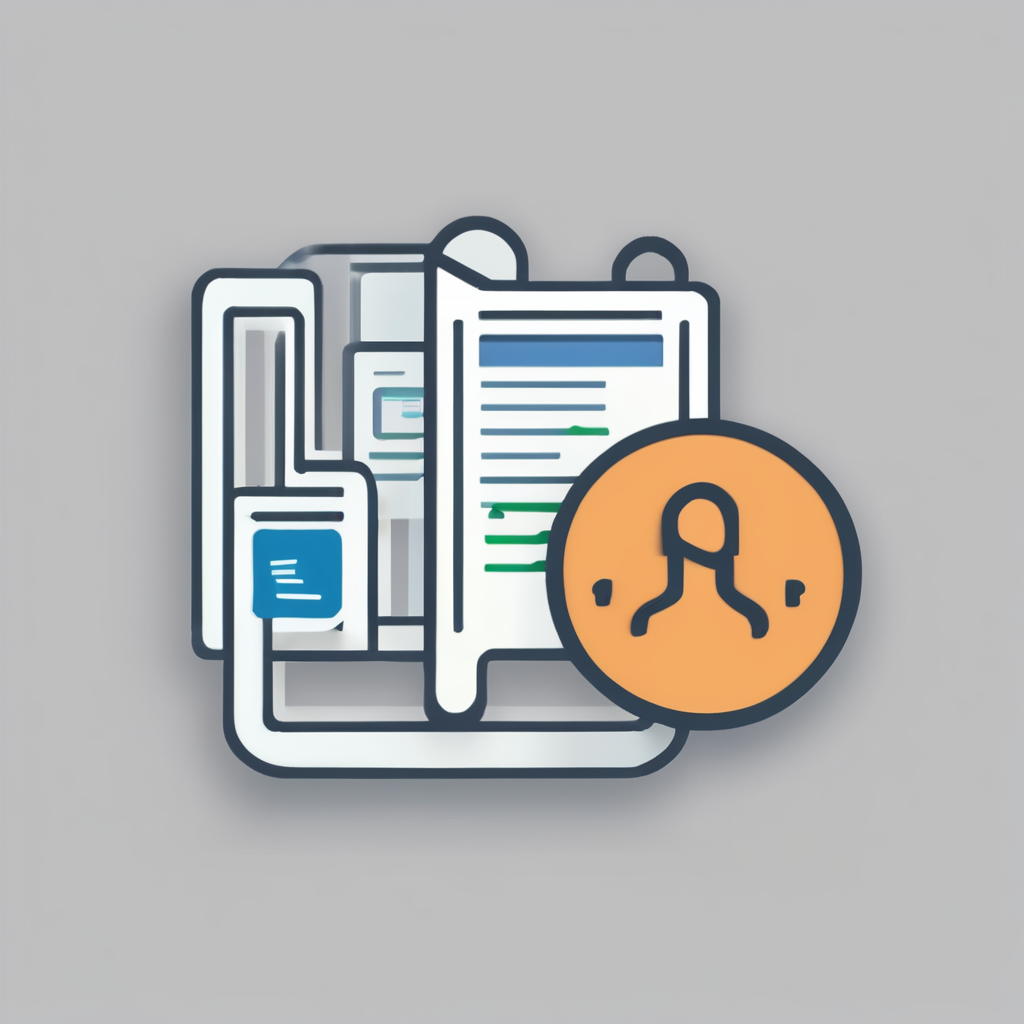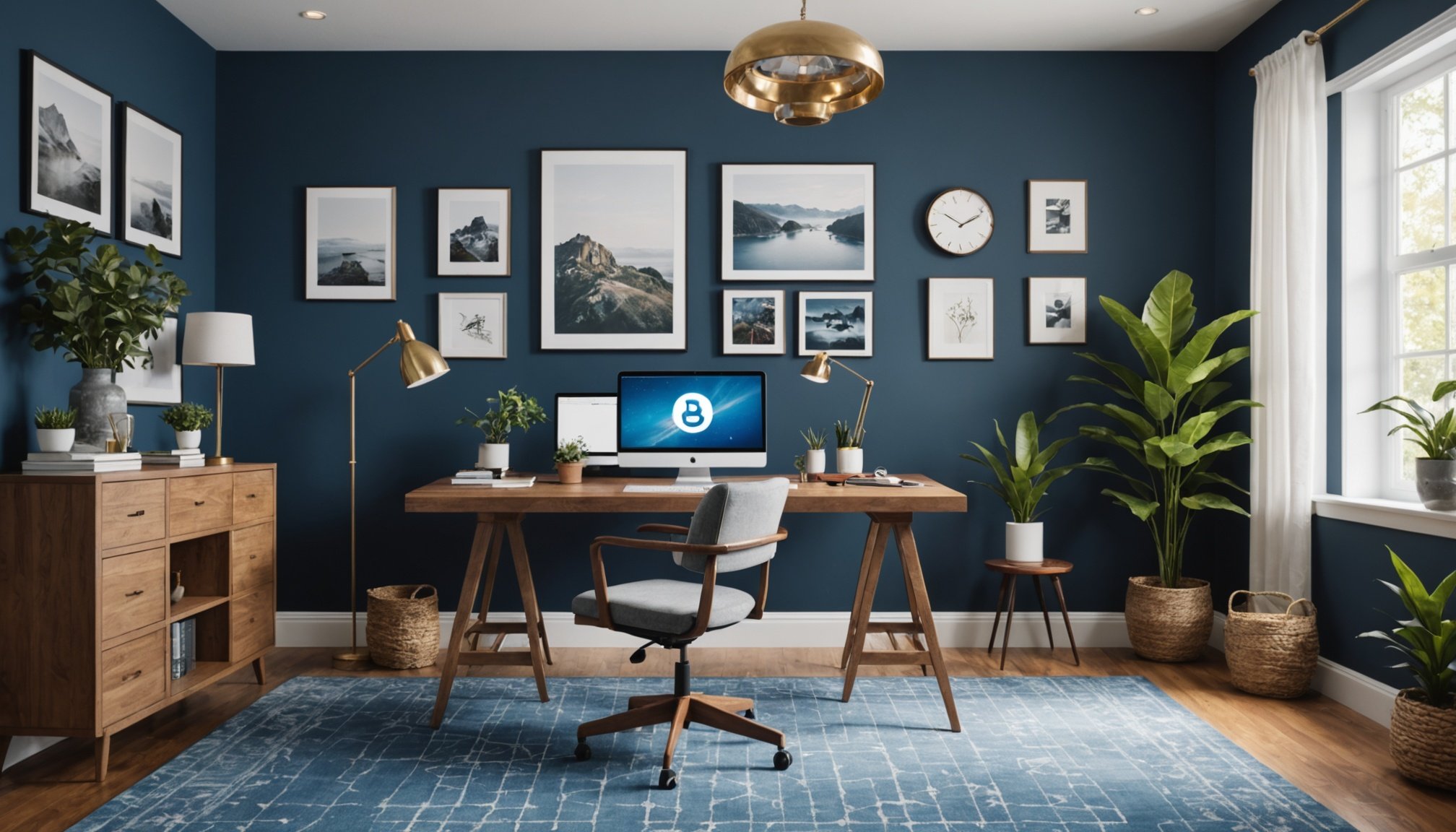Home Office Layout Planning
Creating a home office layout that serves as an efficient podcasting environment requires meticulous planning. Effective space optimization is crucial, especially if you aim to enhance your workspace efficiency. Let’s delve into some ergonomic principles that can transform your home office into a podcasting haven.
An essential element is prioritizing ergonomic design to maintain comfort during long recording sessions. Ensure your chair and desk height align to maintain a neutral posture, minimizing physical strain. Adjust your monitor to eye level, and keep frequently used items within arm’s reach.
Also to see : Transform Your Narrow Hallway: Creative and Chic Bicycle Storage Solutions for Optimal Efficiency
There are common layout configurations tailored for podcasting setups. The ‘L-shaped’ arrangement allows for ample desktop space, accommodating both equipment and workspace essentials. The ‘U-shaped’ configuration facilitates seamless transitions between tasks, perfect for multi-use scenarios. These layouts help concentrate equipment centrally, reducing movement and increasing focus.
Finally, integrating these layouts with ergonomic principles can significantly boost efficiency. Pay attention to these details, as they not only enhance productivity but also contribute to a healthier workspace. With a well-thought-out setup, your home office can become a powerhouse of podcast production, seamlessly blending functionality with comfort.
Also to see : Cutting-Edge Smart Home Solutions for Senior Comfort and Tech Enthusiasts
Essential Equipment for Podcasting
Creating an impeccable podcasting environment starts with selecting the right podcasting equipment. First and foremost, choosing a high-quality microphone is vital for crystal-clear sound production. Dynamic and condenser microphones both offer excellent sound quality, but personal preference and environment should guide your choice.
Moving on to audio interfaces, these essential devices convert your microphone’s analog signals into digital formats, ensuring a seamless recording experience. Interfaces, often equipped with preamps, boost your microphone signals, maintaining the sound’s integrity and offering real-time monitoring options. Mixing consoles are also worth considering as they provide additional control over audio levels and effects.
Don’t overlook additional equipment that can significantly enhance your setup. Headphones are indispensable for monitoring audio in real-time, helping you detect unwanted noises. Pop filters help eliminate plosive sounds, delivering cleaner recordings. Lastly, boom arms allow you to position your microphone optimally, conserving desk space while enhancing ergonomic workspace efficiency.
The combination of these tools not only improves sound quality but contributes to a professional and efficient home office layout for podcasting. Selecting each piece carefully ensures your equipment meets your unique podcasting needs, paving the way for successful production.
Soundproofing Techniques
Achieving excellent audio quality in your home office is crucial for successful podcasting, and soundproofing is an integral component of this setup. Effective acoustic treatments can dramatically enhance sound quality by reducing unwanted noise interference.
When considering soundproofing materials, focus on options like acoustic foam panels, which are excellent at absorbing sound and reducing echo. They’re a straightforward addition to walls or ceilings and can be an aesthetic choice too, as they come in a variety of shapes and colours. Heavy curtains or blankets can also serve as temporary solutions for sound dampening.
Acoustic panel placement is vital in maximising their effectiveness. Panels should ideally cover areas where sound waves interact most heavily, such as corners or windows. The strategic arrangement of these panels can substantially control sound dynamics within your room.
Furthermore, arranging furniture wisely can also aid in noise reduction. Bookshelves, rugs, and upholstered furniture absorb and diffusing sound waves prevent harsh echoes. Even rearranging the desk and chair alignment can make a difference.
By investing in these techniques, you will enhance your podcast’s audio clarity and create a more controlled recording environment, making your workspace a hub of professionalism.
Aesthetic Considerations
Creating a home office with visual appeal enhances your podcasting experience, enabling a more engaging space for creativity. Personal branded home office decor reflects individual podcast themes, aligning your surroundings with your identity. This approach not only invigorates the atmosphere but also fosters a connection with your brand.
When considering colour schemes, blend hues that resonate with your podcast’s tone. For instance, vibrant colours can inspire energy, while softer tones encourage calmness. Paired with strategic lighting choices, your office’s aesthetic can elevate both mood and productivity. Task lighting, ambient glows, or even LED strips can transform mundane corners into stylish backdrops.
Incorporating personal elements, such as artwork or memorabilia, injects your space with character, drawing inspiration from other successful podcasters. Their spaces often blend practicality with personalised charm, which can motivate your creative process.
Let your workspace inspiration guide you in cultivating an area that’s both functional and representative of your podcasting ethos. Whether it’s a DIY approach to decor or selecting unique furniture, personalisation allows your workspace to embody your unique style, fostering an environment ripe for creative pursuits.
Ergonomic Tips for Comfort
Creating an ergonomic workspace is essential for maintaining comfort and health, especially during long podcasting sessions. Start with choosing a desk and chair that support a natural posture. Chairs should offer adjustable height, lumbar support, and cushioned armrests that reduce strain on your back and shoulders. An adjustable desk complements this by allowing you to switch between standing and sitting positions, thereby encouraging movement.
Monitor placement is also crucial. Position your monitor at eye level and approximately an arm’s length away. This reduces neck and eye strain, ensuring a comfortable workspace environment. An ergonomic keyboard and mouse can further enhance comfort by keeping your wrists straight and reducing tension.
To maintain physical well-being, incorporate daily routines that promote movement. Breaks are vital; stand, stretch, or walk every hour to counteract prolonged sitting. Integrate exercises that improve posture, such as neck rolls or shoulder shrugs, to keep muscles limber.
By following these ergonomic workspace principles, you’ll not only improve comfort but also enhance your ability to produce high-quality podcasts. Prioritising health in your home office setup is a worthwhile investment in your productivity and overall well-being.
Maximizing Functionality
A multi-functional workspace is key for podcasters who juggle various tasks. To boost productivity, designing an area that serves multiple purposes is essential. Think about a layout that facilitates both podcasting and routine office duties, allowing easy transitions between activities. Multi-use spaces can revolutionize how efficiently tasks are performed, ensuring all necessary tools are within reach.
Smart storage solutions are invaluable for maintaining an organized setup. Utility shelves and drawer organizers keep essential equipment and supplies tidy, reducing clutter and enhancing focus. Consider vertical storage options to maximize limited space while keeping your area functional and inviting.
Incorporating organisational apps and productivity tools can enhance your workflow seamlessly. Tools that track tasks or schedule recordings help manage your time effectively. Many podcasters rely on task management apps to ensure nothing falls through the cracks, making life a bit easier and more streamlined.
By blending these strategies into your home office, you create a well-organized, efficient environment. The adaptability of multi-use spaces not only fosters productivity but also encourages creativity, ensuring your work area supports every facet of your podcasting journey.
Personalization and Inspiration
Transforming your home office layout into a reflection of your podcasting brand begins with incorporating personalized decor. Start by including DIY projects that resonate with your podcast’s theme. Not only do these projects infuse your space with individuality, but they also create a more engaging environment.
Next, draw inspiration from successful podcasters and their workspace designs. Many have adopted creative layouts that balance function and personal flair. For instance, some choose to integrate memorabilia or signature items that tell their story, grounding their professional area in personal history.
Consider personalizing your space with items that motivate and inspire you every day. Photos, quotes, and artwork can transform your workspace into an empowering hub. Moreover, adopting a colour scheme that aligns with your branding reinforces your identity and enhances your office’s visual appeal.
DIY projects like custom shelving or decor pieces can further personalise the area, offering unique storage solutions that fit seamlessly into the space. Express your style through these thoughtful touches, creating a uniquely inviting and productive podcasting environment. Let your workspace be a canvas that illustrates your creative journey and vision.

